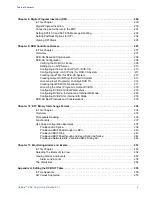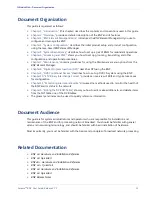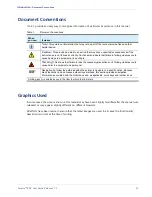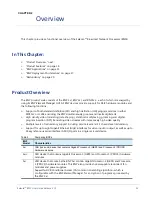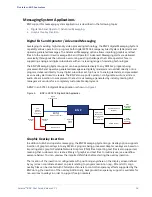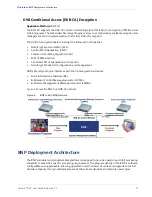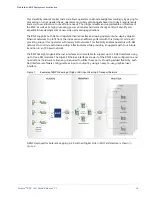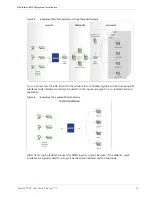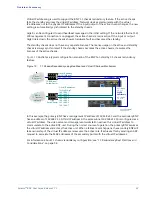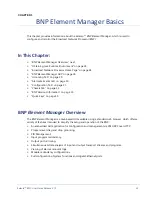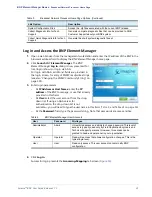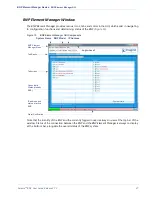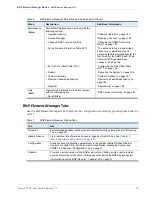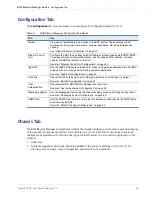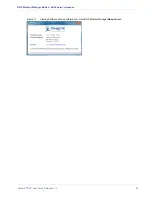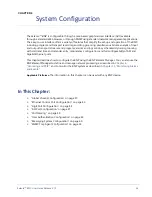
Selenio
TM
BNP User Guide, Release 3.7.1
22
Overview
- Redundancy
Virtual IP addressing is used to support the BNP 1:1 chassis redundancy feature. If the active chassis
fails, the standby assumes the virtual IP address. Network devices communicate with the virtual
IP addresses, not to the physical IP addresses. If the input/output of the active chassis changes, the new
setting is automatically synchronized to the standby chassis.
GigE 8 can be configured to send heartbeat messages in the initial setting. If the network Ethernet 10/
100 management connection is unplugged, the active chassis remains active. If the input or output
GigE link is down, the active chassis shows a hardware fault and becomes the standby.
The standby chassis does not have any separate licenses. The license usage on the active and standby
chassis is always synchronized; if the standby chassis becomes the active chassis, it assumes the
licenses of the active chassis.
illustrates a typical configuration scenario of the BNP hot-standby 1:1 chassis redundancy
feature.
Figure 10.
1:1 Chassis Redundancy using Heartbeat and Virtual IP Failover Mechanism
GigE
Switch/Router
10/100BaseT
Switch/Router
Media
IP Transport
Network
Control
IP Network
GigE8
Heartbeats
10/100BaseT Heartbeats
Port 10/100BaseT
192.168.21.1
Port GigE8
10.1.1.1
Port GigE8
10.1.1.2
Port 10/100BaseT
192.168.21.2
virtual IP addresses
for GigE1-Gig7
192.168.2.1
192.168.2.2
192.168.2.3
192.168.2.4
192.168.2.5
192.168.2.6
192.168.2.7
virtual IP address
for 10/100BaseT
192.168.21.200
In this example, the primary BNP has a management IP address of 192.168.21.1 and the secondary BNP
has an address of 192.168.21.2. A third IP address in the same subnet 192.168.21.200 is configured as a
virtual IP address. The video server and management workstation will use this virtual IP address to
communicate to the active BNP unit. During the normal course of operation, the primary BNP assumes
the virtual IP address and acts as the active unit. When a failover event happens, the secondary BNP will
take ownership of the virtual IP address and assume the active role. It achieves this by sending an ARP
request to associate the MAC addresses of the secondary ports with the virtual IP addresses.
For information about 1:1
chassis redundancy configuration, see “1:1 Redundancy Best Practices and

